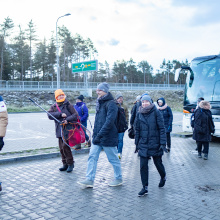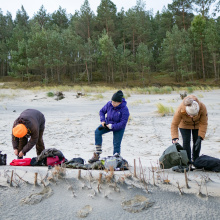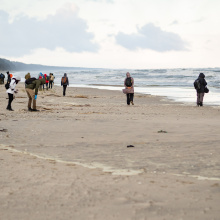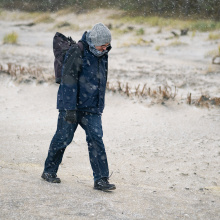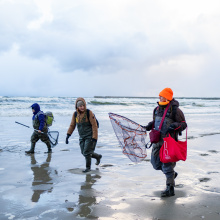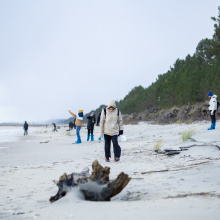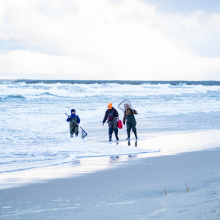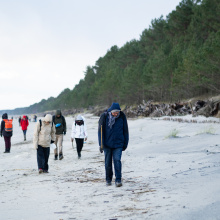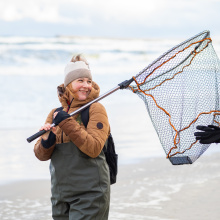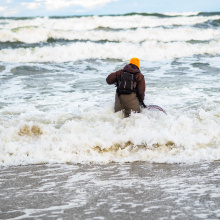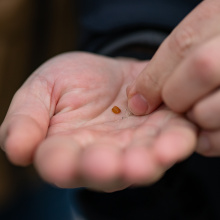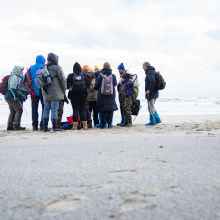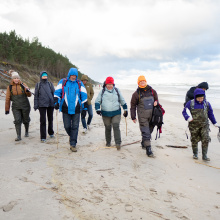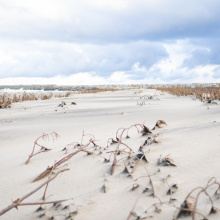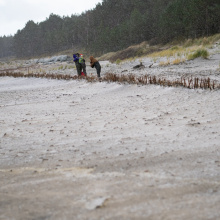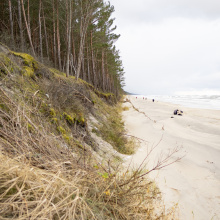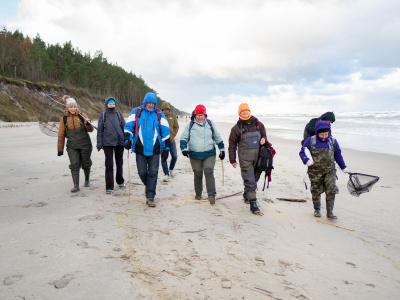
Before dawn, amateur and professional amber seekers gathered in front of the Faculty of Biology UG. Some wanted to collect the fossil resin for their own collection, others for scientific purposes. The weather was perfect: dark clouds, strong wind and high waves meant the sea could throw the 'Baltic gold' ashore. On November 25, the Faculty of Biology organised a joint amber fishery for the UG academic community.
The search took place on the beach near the Vistula Spit Crossing. It started around 7:40 a.m. and ended before 11 a.m. After the meeting, participants and organisers expressed their desire to take part in another such initiative.
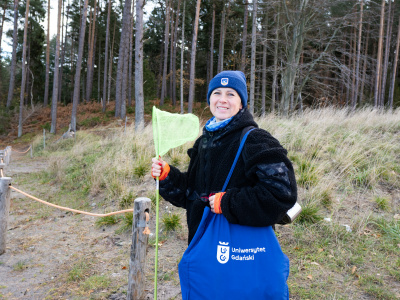
Bożena Soćko
‘The trip was great, the weather was fine, and the company was sensational. We look forward to a repeat, especially as the amber was hidden from us this time. But I am still very satisfied; it was a Saturday morning very well spent,' said the Building Administrator of the Faculty of Philology and Faculty of History, Bożena Soćko.
‘Whether amber will emerge depends on it being in a layer that will be moved by the waves. All that is in the Baltic Sea is secondary deposits. The Baltic Sea is young; it is only 12 thousand years old, so the original layers where amber was deposited primarily are not there,' says dr hab. Jacek Szwedo, prof. UG. ‘These layers have been mixed and moved many times. Amber is lighter than sediment, so if it is moved, there is a good chance it will float to the beach.'

